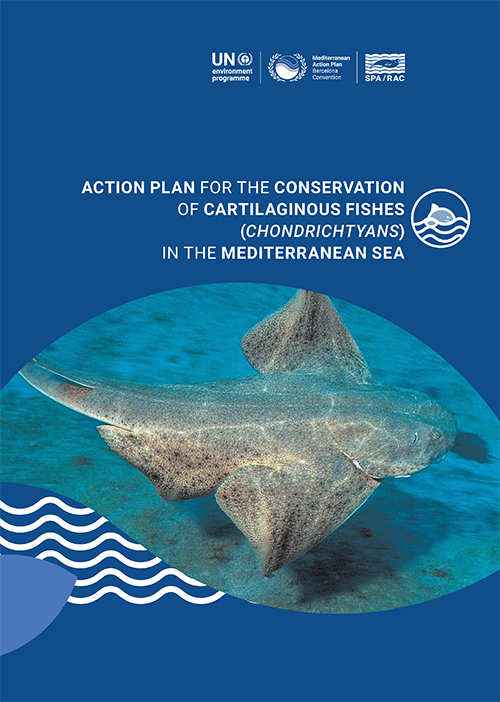Search
Action Plan on Cartilaginous Fishes
In zoological classification, the chondrichthyans form a class of fishes, with cartilaginous skeletons, usually called sharks, rays and chimera. The rays, or elasmobranch fish, are ‘flat-bodied sharks’.
The Action Plan for the Conservation of cartilaginous fishes (Chondrichthyans) in the Mediterranean is a project for a programme falling within:
- the Barcelona Convention adopted by the Mediterranean countries, particularly the Protocol on Specially Protected Areas and Biological Diversity in the Mediterranean (SPA/BD);
- the International Action Plan for the conservation and management of sharks (IPOA-Sharks) suggested by the FAO and adopted by the UN member states in 1999 (Note: in FAO documents the word ‘sharks’ is used for all chondrichthyans) ;
- the UN Agreement on Straddling Fish Stocks and Highly Migratory Fish Stocks, which came into effect on 11 December 2001 ;
- paragraph 31 of the plan to implement the resolutions of the World Summit for Sustainable Development adopted in Johannesburg in September 2002.
Seen as implementing IPOA-Sharks, the Action Plan for the Conservation of Chondrichthyans in the Mediterranean is a suggestion for setting up regional strategies, and setting out priorities and actions to be undertaken at national and regional level, for regional cooperation is necessary for ensuring that conservation methods are put into effect. IPOA-Sharks suggests that FAO member states develop National Action Plans when their fishing fleets catch sharks, either intentionally or accidentally. In compliance with this recommendation, the Contracting Parties to the Barcelona Convention are strongly invited to elaborate National Action Plans according to the priorities defined in the present document to ensure the conservation and management of chondrichthyan resources in their environment, as well as their sustainable use.
Within the framework of the Barcelona Convention, some chondrichthyans are already protected, mainly the great white shark (Carcharodon carcharias), the basking shark (Cetorhinus maximus) and the Mediterranean Manta ray (Mobula mobular). Also, some Mediterranean countries have introduced specific protection measures for these species to strengthen their protected species status.
Other chondrichthyans are on the IUCN’s Red List, in the appendices to the Berne and Bonn Conventions, and some have been listed in the CITES appendices.
These conservation measures that target particular species are obviously useful at specific level but are insufficient at ecosystem level. That is why the habitat and environmental parameters must be included in the Action Plan. Also, it is necessary to bear in mind the following directives when elaborating an Action Plan:
- Conservation of species.
- Maintaining biodiversity.
- Protecting the habitat.
- Management for sustainable use.
- Scientific research.
- Monitoring.
- Funding for research, implementation and monitoring.
- Public awareness.
- International cooperation for high sea monitoring.
Thus, implementing the Action Plan has to involve a large number of partners, and its success requires increased cooperation between the various jurisdictions, commercial fishermen, environmental and conservation bodies, associations of sports and recreational fishermen, scientific and research organizations, and military and administrative structures at national, regional and international level.
Download the Action Plan in pdf format
An updated implementation timetable has been set for the period going from 2010 to 2013. you can follow this link to download it.




Find Us On...